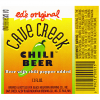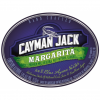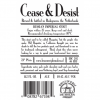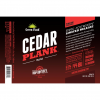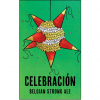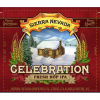The Story:
The fall of 1868 found French-Canadian Louis Barrette disgusted with his luck in the Northern Idaho gold fields and looking around for better prospect enroute to the largely French-Canadian settlement of Frenchtown, located along the Mullan Road, Barrette rode parallel of the St. Joe River to its headwaters in the Coeur d’Alene Mountains.
As he followed along the summit trail, he spotted a basin on the Montana side that looked promising, to his gold prospector’s eye. Barrette resolved that he would return to the area after wintering in Frenchtown. It was possibly on this trip that he met Adolph Lozeau, another French-Canadian. Lozeau operated a ranch about five miles east of the mouth of Cedar. His Forty Mile House had been a wayfarer’s stop along the Mullan Road for two years.
It was not until the next fall that Barrette finally returned to the basin that had caught his eye. He and his partner, Basil Lanthier, climbed into the steep, cedar-crowded gulch with several pack and saddle horses loaded with enough supplies to last them several weeks. Their departure from Frenchtown was not a secret, thus many eyes would be watchful for any indications that their trip was a success.
And indeed, they did find gold, on October 9,1869, at the mouth of Cayuse Creek.
Once word got past Frenchtown, men (there were no women in Cedar this early) poured in from all over the territory, Northern Idaho, the surrounding states and even the West Coast. From Missoula one correspondent to the “New North-West” wrote, “Missoula has been wild for a week.” The result, he said, was that “Hotel keepers, merchants, clerks, idle men and loafers, all are gone…”
This frantic mob rushing into such an isolated spot presented some very real problems in the way of lack of shelter and food shortages. Packers soon poured into the snow-packed drainage with beans (50 cents a pound), bacon (75 cents a pound) and gumboots ($18 a pair). Housing was of the roughest sort-canvas shelters and brush hovels. The territory’s papers warned the determined stampeders to go “well clad, blanketed and pursed.”
The Beer:
Taking beer back to the era of the 1850’s California Gold Rush, the Cayuse Creek Common brings the flavor. The rustic wood aromas (reminiscent of the barn wood in the taproom) of Northern Brewer hops take charge of the nose, while a slight caramel whiff lingers in the background. The rich copper color hints at the flavors of caramel and grains that collaborate with Northern Brewer hop profile. The finish is distinctly crisp and dry.
Lolo Peak Brewing Company
